August-December
Ahmad Zakaria, Ramia Al Bakain, Mohammed Rasheed & Mervat El-Hoz (2022). Assessment and geographical prediction of sediments origin based on hydrocarbons content: application to the Gulf of Aqaba and Port of Tripoli. International Journal of Environmental Analytical Chemistry, https://doi.org/10.1080/03067319.2022.2104640
Bansal, B. K., Verma, M., Gupta, A. K., & Prasath, R. A. (2022). On mitigation of earthquake and landslide hazards in the eastern Himalayan region. Natural hazards, 1-24. https://doi.org/10.1007/s11069-022-05448-y
Labe, Z.M. and E.A. Barnes (2022). Comparison of climate model large ensembles with observations in the Arctic using simple neural networks. Earth and Space Science, https://doi.org/10.1029/2022EA002348
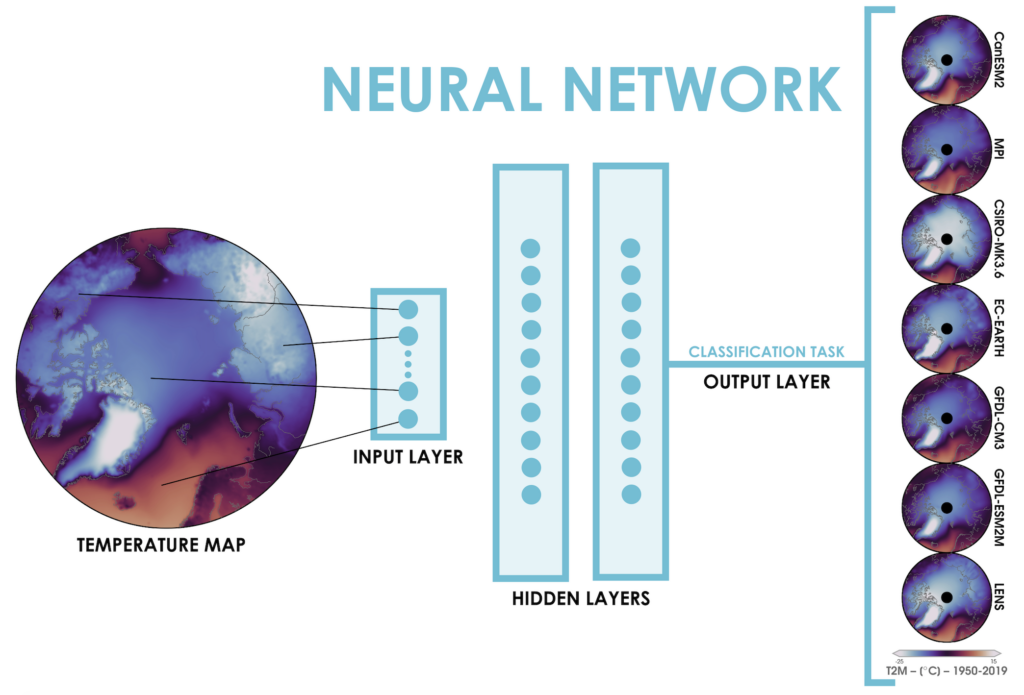
Lim, H.-G., J. P. Dunne, C. A. Stock, P. Ginoux, J. G. John, and J. Krasting (2022). Oceanic and atmospheric drivers of post-El-Niño chlorophyll rebound in the equatorial Pacific. Geophysical Research Letters, 49, e2021GL096113
Mehmood, S., Ashfaq, M., Kapnick, S. Gosh, S., Abid, M.A. et al. (2022). Dominant controls of cold-season precipitation variability over the high mountains of Asia. npj Clim Atmos Sci 5, 65. https://doi.org/10.1038/s41612-022-00282-2
Mohammad, S., Dutta, G., Ajay Kumar, M.C. et al. (2022). Seasonal effects of atmospheric waves over tropical tropopause using radiosonde observations at Hyderabad, India. Meteorol Atmos Phys 134, 83. https://doi.org/10.1007/s00703-022-00918-1
Mohammad, S., Wang, PK. & Chou, YL. (2022). A Cloud Model Study of Internal Gravity Wave Breaking Atop a High Shear Supercell in Us High Plains. Russ. J. Phys. Chem. B 16, 549–563. https://doi.org/10.1134/S1990793122030198
Nandi, S., & Swain, S. (2022). Analysis of heatwave characteristics under climate change over three highly populated cities of South India: a CMIP6-based assessment. Environmental Science and Pollution Research. https://doi.org/10.1007/s11356-022-22398-x
Noh, K. M., H.-G. Lim, and J.-S. Kug (2022). Global chlorophyll responses to marine heatwaves in satellite ocean color. Environmental Research Letters, 17(6), 064034. https://doi.org/10.1088/1748-9326/ac70ec
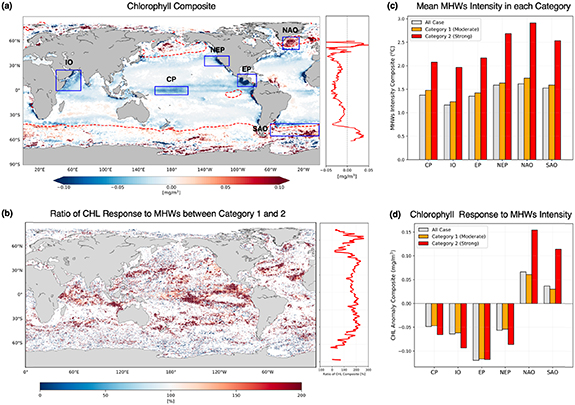
Upadhyay, A., Mahapatra, P. S., Singh, P. K., Dahal, S., Pokhrel, S., Bhujel, A., Joshi, I. B., Paudel, S. P., Puppal, S. P., & Adhikary, B. (2022). Learnings from COVID-19 Forced Lockdown on Regional Air Quality and Mitigation Potential for South Asia. Aerosol and Air Quality Research, 22, 210376. https://doi.org/10.4209/aaqr.210376
July
Saha, Sourita, Som Sharma, Abha Chhabra, Kondapalli Niranjan Kumar, Prashant Kumar, Dharmendra Kamat, and Shyam Lal (2022). Impact of dust storm on the atmospheric boundary layer: a case study from western India. Natural Hazards: 1-13. https://doi.org/10.1007/s11069-022-05293-z
Saha, Sourita, Som Sharma, Kondapalli Niranjan Kumar, Prashant Kumar, Shyam Lal, and Dharmendra Kamat (2022). Investigation of atmospheric boundary layer characteristics using ceilometer lidar, COSMIC GPS RO satellite, radiosonde and ERA-5 reanalysis dataset over Western Indian region. Atmospheric Research 268: 105999. https://doi.org/10.1016/j.atmosres.2021.105999.
Shukla, K. K., Chandan Sarangi, Raju Attada, and Prashant Kumar. Characteristic dissimilarities during high aerosol loading days between western and eastern Indo-Gangetic Plain (2022). Atmospheric Environment 269: 118837. https://doi.org/10.1016/j.atmosenv.2021.118837
June
Kumar, Prashant, Munn Vinayak Shukla, and Atul K. Varma (2022). Impact of All Sky Water Vapour Channel Radiance from INSAT-3D/3DR Satellite over South-Asia Region using WRF Model. Quarterly Journal of the Royal Meteorological Society. https://doi.org/10.1002/qj.4323
Osman, M., Shepherd, T.G. & Vera, C.S. (2022). The combined influence of the stratospheric polar vortex and ENSO on zonal asymmetries in the southern hemisphere upper tropospheric circulation during austral spring and summer. Clim Dyn. https://doi.org/10.1007/s00382-022-06225-0
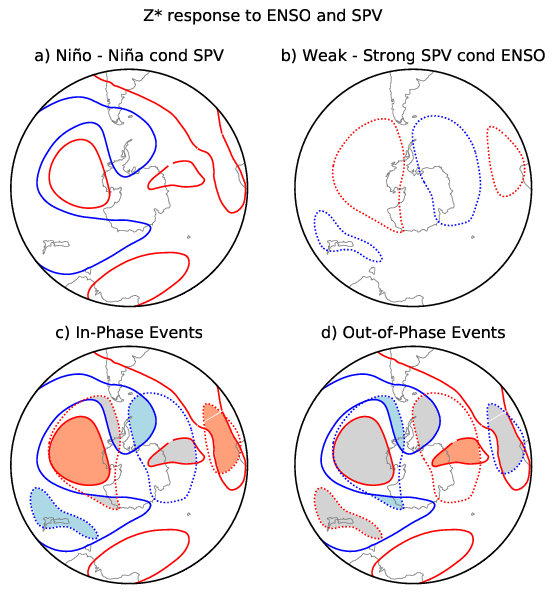
Rathore S, Goyal R, Jangir B, Ummenhofer CC, Feng M and Mishra M (2022). Interactions Between a Marine Heatwave and Tropical Cyclone Amphan in the Bay of Bengal in 2020. Front. Clim. 4:861477. doi: 10.3389/fclim.2022.861477

Valmassoi, A., Keller, J. D., Kleist, D. T., English, S., Ahrens, B., Ďurán, I. B., Bauernschubert, E., Bosilovich, M. G., Fujiwara, M., Hersbach, H., Lei, L., Löhnert, U., Mamnun, N., Martin, C. R., Moore, A., Niermann, D., Ruiz, J. J., & Scheck, L. (2022). Current challenges and future directions in data assimilation and reanalysis. Bulletin of the American Meteorological Society. https://doi.org/10.1175/BAMS-D-21-0331.1
May

Calabia, A.; Anoruo, C.; Shah, M.; Amory-Mazaudier, C.; Yasyukevich, Y.; Owolabi, C.; Jin, S. (2022). Low-Latitude Ionospheric Responses and Coupling to the February 2014 Multiphase Geomagnetic Storm from GNSS, Magnetometers, and Space Weather Data. Atmosphere, 13, 518. https://doi.org/10.3390/atmos13040518
Labe, Z.M. and E.A. Barnes (2022). Predicting slowdowns in decadal climate warming trends with explainable neural networks. Geophysical Research Letters. DOI:10.1029/2022GL098173
Pandey, H. P., Gnyawali, K., Dahal, K., Pokhrel, N. P., & Maraseni, T. N. (2022). Vegetation loss and recovery analysis from the 2015 Gorkha earthquake (7.8 Mw) triggered landslides. Land Use Policy, 119, 106185. https://doi.org/10.1016/j.landusepol.2022.106185
Perini, A.A., Pérez, A.F.H., Melo, C.V.G., Blanco, C.M.R., Agopyan, K.K., Lamas, L., Bonifácio, N.F., Varón, N.C.M., Ribeiro, R.R.R., Alves, S.C.M., Dominici, T.P., Arowojolu, I.M. (2021). International Linkages of Brazilian Sub-National Innovation Ecosystems. In: Oliveira, A., Silva, P.F., Ferreira, G.C. (Editors), Innovation Diplomacy: Brazil´s and Regional´s Analysis and Roadmap. Published in the United States of America by Bold and Wise Publishers Tm, 175 p. ISBN 978-1-943350-90-2
Prasath, R. A., Bansal, B. K., & Verma, M. (2022). Stress Distribution in the Western India-Eurasia Collision Zone, its Kinematics and Seismotectonic implications. Journal of Asian Earth Sciences, 105208. https://doi.org/10.1016/j.jseaes.2022.105208
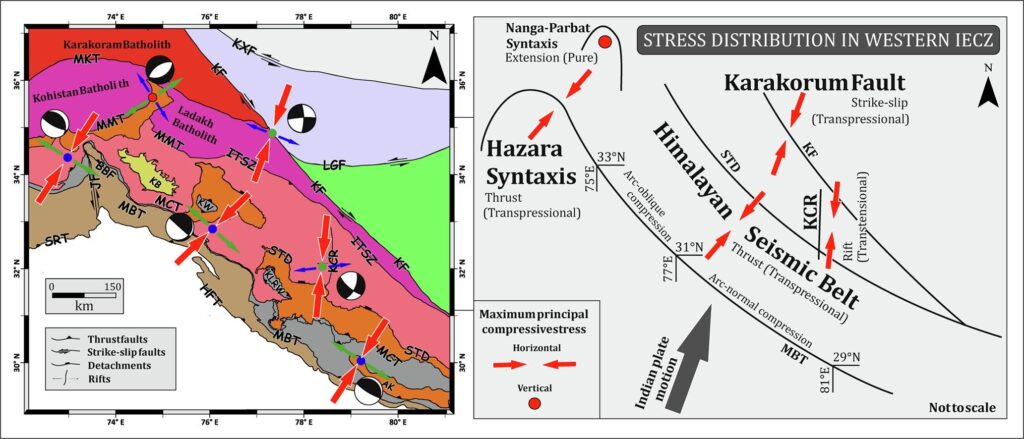
Shah, M., Abbas, A., Ehsan, M., Calabia, A., Adhikari, B., Tariq, M.A., Ahmed, J., de Oliveira-Junior, J.F.,Yan, J., Melgarejo-Morales, A., and Jamjareegulgarn, P. (2022). Ionospheric-Thermospheric Responses to the August 2018 Geomagnetic Storm over South America from Multiple Satellites. Journal of Selected Topics in Applied Earth, IEEE, 15, 261-269. 10.1109/JSTARS.2021.3134495
Swain, S., Sahoo, S., Taloor, A. K., Mishra, S. K., & Pandey, A. (2022). Exploring recent groundwater level changes using Innovative Trend Analysis (ITA) technique over three districts of Jharkhand, India. Groundwater for Sustainable Development 18, 100783. https://doi.org/10.1016/j.gsd.2022.100783

April
Jain, S., & Scaife, A. A. (2022). How extreme could the near term evolution of the Indian Summer Monsoon rainfall be?. Environmental Research Letters, 17(3), 034009. https://doi.org/10.1088/1748-9326/ac4655
Koren, G., Ferrara, V., Timmins, M., & Morrison, M. A. (2022). Global environmental change perspectives on Integrated, Coordinated, Open, and Networked (ICON) Science. Earth and Space Science, 9, e2022EA002231. https://doi.org/10.1029/2022EA002231
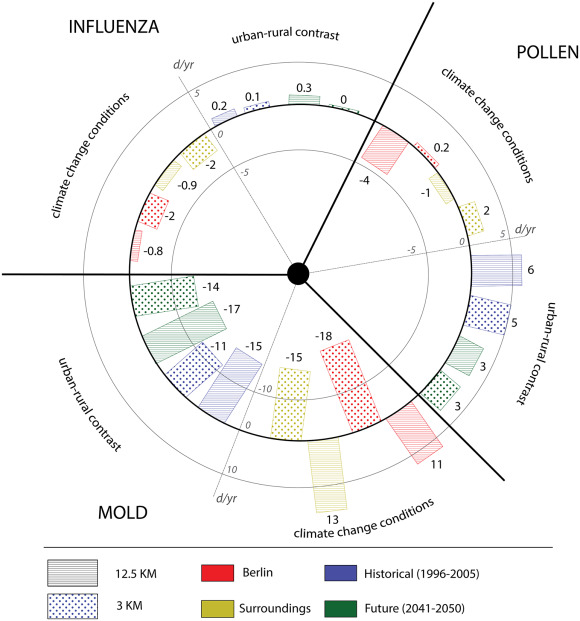
Langendijk, G. S., Rechid, D., & Jacob, D. (2022). Improved models, improved information? Exploring how climate change impacts pollen, influenza, and mold in Berlin and its surroundings. Urban Climate, 43, 101159. https://doi.org/10.1016/j.uclim.2022.101159
Olmo ME, Balmaceda-Huarte R, Bettolli ML (2022). Multi-model ensemble of statistically downscaled GCMs over southeastern South America: historical evaluation and future projections of daily precipitation with focus on extremes. Climate Dynamics. https://doi.org/10.1007/s00382-022-06236-x

Patel, P., Thakur, P. K., Aggarwal, S. P., Garg, V., Dhote, P. R., Nikam, B. R., Swain, S., & Al-Ansari, N. (2022). Revisiting 2013 Uttarakhand flash floods through hydrological evaluation of precipitation data sources and morphometric prioritization. Geomatics, Natural Hazards and Risk, 13(1), 646-666. https://doi.org/10.1080/19475705.2022.2038696

Singh, S., Joshi, A., Sahu, A., Arun Prasath, R., Sharma, S., & Dwivedi, C. S. (2022). Himalayan Landslides–Causes and Evolution. In Disaster Management in the Complex Himalayan Terrains (pp. 33-42). Springer, Cham. https://doi.org/10.1007/978-3-030-89308-8_3
Swain, S., Sahoo, S., & Taloor, A. K. (2022). Groundwater quality assessment using geospatial and statistical approaches over Faridabad and Gurgaon districts of National Capital Region, India. Applied Water Science, 12(4), 75. https://doi.org/10.1007/s13201-022-01604-8
March
Ahmed, S., Thomas, J. L., Tuite, K., Stutz, J., Flocke, F., Orlando, J. J., et al. (2022). The role of snow in controlling halogen chemistry and boundary layer oxidation during Arctic spring: A 1D modeling case study. Journal of Geophysical Research: Atmospheres, 127, e2021JD036140. https://doi.org/10.1029/2021JD036140

Bartkowiak, P., Castelli, M., Crespi, A., Niedrist, G., Zanotelli, D., Colombo, R., & Notarnicola, C. (2022). Land Surface Temperature Reconstruction under Long-term Cloudy-sky Conditions at 250 m Spatial Resolution: Case Study of Vinschgau/Venosta Valley in the European Alps. IEEE Journal of Selected Topics in Applied Earth Observations and Remote Sensing. 10.1109/JSTARS.2022.3147356
Latonin, M.M., Bobylev, L.P., Bashmachnikov, I.L., Davy, R. (2022). Dipole pattern of meridional atmospheric internal energy transport across the Arctic gate. Scientific Reports 12, 2363. https://doi.org/10.1038/s41598-022-06371-9
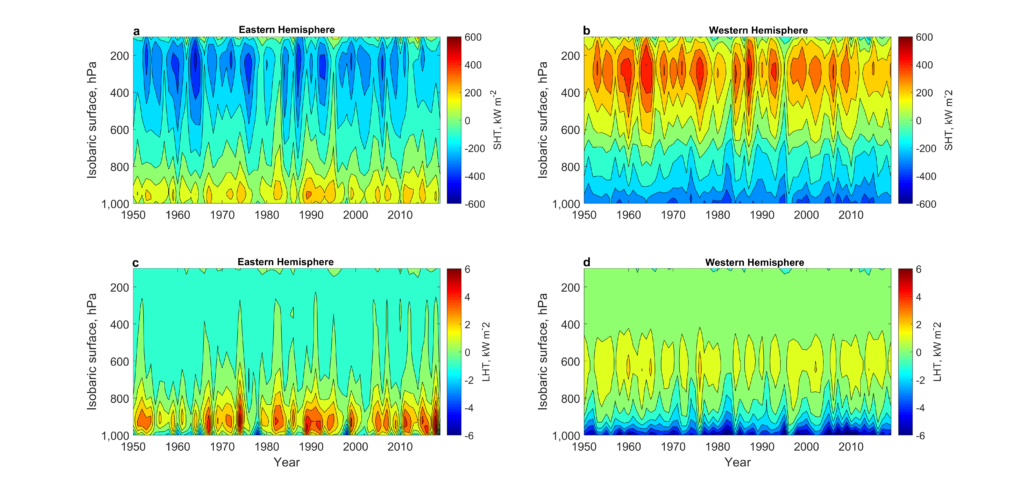
Prasath, R. A., Verma, M., & Bansal, B. K. (2022). Stress shadow, stress triggering, and recent earthquake activity in the Kashmir Himalaya, India. Journal of Seismology, 26(1), 167-179. https://doi.org/10.1007/s10950-021-10067-4

Swain, S., Mishra, S. K., Pandey, A., & Kalura, P. (2022). Inclusion of groundwater and socio-economic factors for assessing comprehensive drought vulnerability over Narmada River Basin, India: A geospatial approach. Applied Water Science, 12(2), 1-16. https://doi.org/10.1007/s13201-021-01529-8
Garzon, J, I Molina, J Velasco, and A Calabia (2021). Surface Urban Heat Island Modeling using Principal Component Analysis, Multiple Linear Regression, and Machine Learning Algorithms. Remote Sens., 13(21), 4256. https://doi.org/10.3390/rs13214256
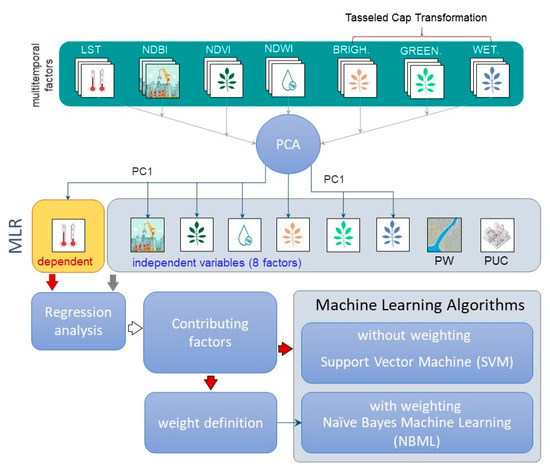
H. Vishnu, G. Deane, M. Chitre, O. Glowacki, D. Stokes, M. Moskalik and H. Johnson (2021). Spatial variation in acoustic field due to submarine melting in glacial bays. ASA meeting 2021. https://doi.org/10.1121/10.0008459
Rashid, I. U., Abid, M.A., Almazroui, M., Kucharski, F., Hanif, M., Ali, S.,& Ismail, M. (2022). Early summer surface air temperature variability over Pakistan and the role of El Niño–Southern Oscillation teleconnections. International Journal of Climatology, 1–17. https://doi.org/10.1002/joc.7560
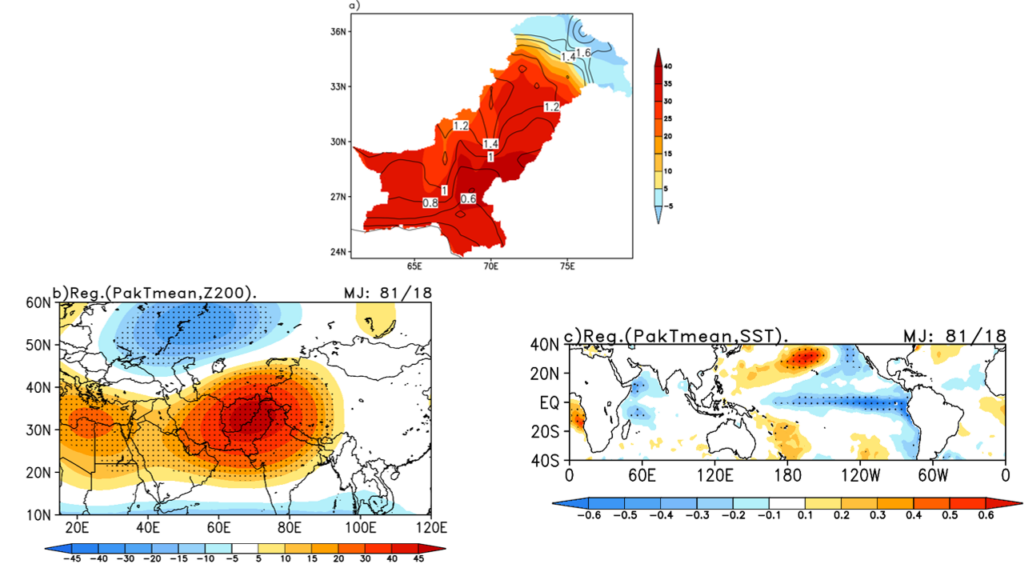
Ramos Ribeiro, R.R., Sulaiman, S.N., Sieber, S., Angel Trejo-Rangel, M. & Campos, J.F. (2021). Integrated Assessment of Drought Impacts on Rural Areas: The Case of the Chapada Diamantina Region in Brazil. Journal GeoHazards (2): 442-453. https://doi.org/10.3390/geohazards2040025

Trejo-Rangel, M.A., Ramos Ribeiro, R.R., Fernández Lopera, C.C., Mota Ferreira, A., Esquivel-Gomez, N.N. & Liera-Martínez, C.C. (2022). Enfoques Hegemónicos en la Gestión del Riesgo de Desastres Asociados a Eventos Hidrometeorológicos: Análisis del Contexto de Latinoamérica y el Caribe. Revista de Estudios Latinoamericanos sobre Reducción del Riesgo de Desastres REDER, 6(1), 25-34. https://doi.org/10.55467/reder.v6i1.82
Wu, X, A Calabia, J Xu, W Bai, and P Guo (2021). Forest canopy scattering properties with signal of opportunity reflectometry: theoretical simulations. Geosci. Lett. 8, 25. https://doi.org/10.1186/s40562-021-00195-7
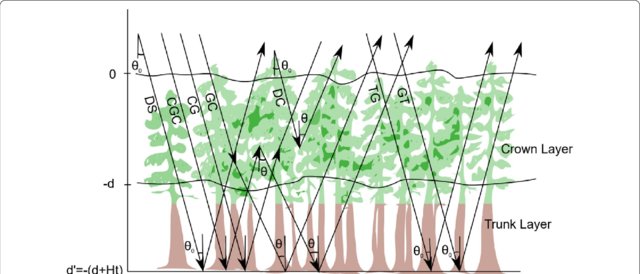
Calabia, A and S Jin (2021). Thermospheric mass density disturbances due to magnetospheric forcing from 2014-2020 CASSIOPE precise orbits. J. Geophys. Res. Space Phys., 126. https://doi.org/10.1029/2021JA029540
Guptha, G. C., Swain, S., Al-Ansari, N., Taloor, A. K., & Dayal, D. (2022). Assessing the role of SuDS in resilience enhancement of urban drainage system: A case study of Gurugram City, India. Urban Climate, 41, 101075.https://doi.org/10.1016/j.uclim.2021.101075

Nasr, A. A., Wahl, T., Rashid, M. M., Camus, P., and Haigh, I. D. (2021). Assessing the dependence structure between oceanographic, fluvial, and pluvial flooding drivers along the United States coastline. Hydrology and Earth System Sciences, 25, 6203–6222. https://doi.org/10.5194/hess-25-6203-2021

Ribeiro, R. R. R., & Sulaiman, S. N. (2022). Fire hazard forecast by the regional climate change projection using the ETA model: a case study in Bahia, Brazil. Territorium, (29 (I)), 59-66. https://doi.org/10.14195/1647-7723_29-1_5

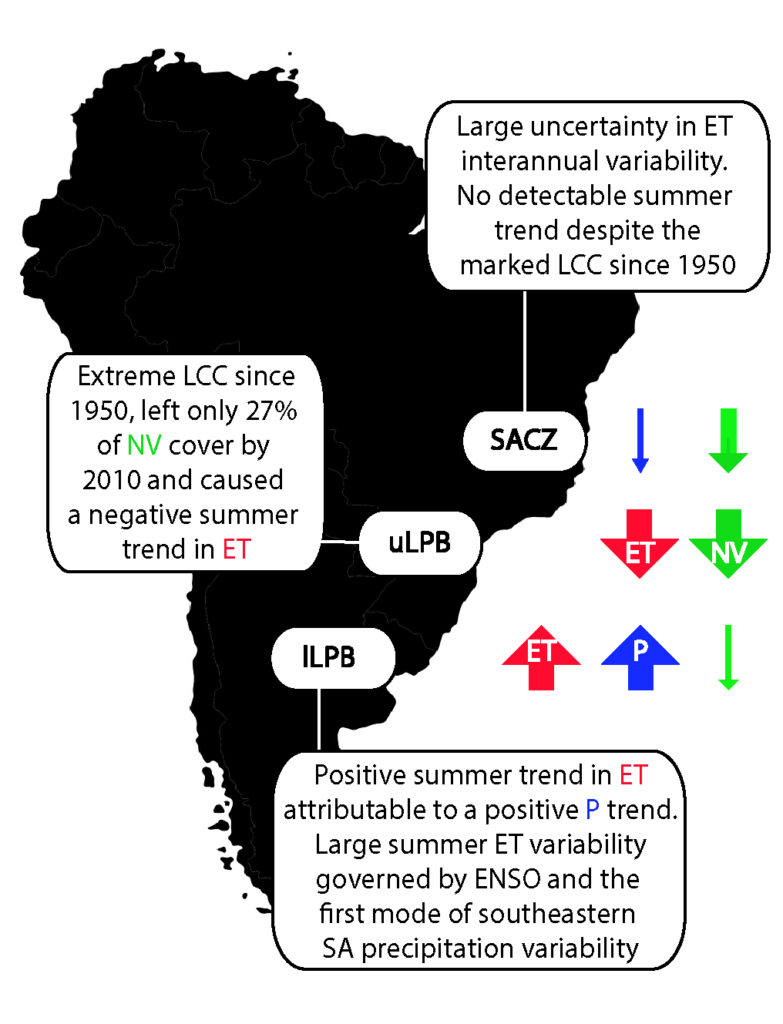
Ruscica, RC., Sörensson, AA., Diaz, LB., Vera, C. et al. Evapotranspiration trends and variability in southeastern South America: The roles of land-cover change and precipitation variability. International Journal of Climatology, 1– 20 (2021). https://doi.org/10.1002/joc.7350
Sharma, S., Dahal, K., Nava, L., Gouli, M. R., Talchabhadel, R., Panthi, J., … & Ghimire, G. R. (2021). Natural Hazards Perspectives on Integrated, Coordinated, Open, Networked (ICON) Science. Earth and Space Science, e2021EA002114. https://doi.org/10.1029/2021EA002114
Timmermans, M. L., & Labe, Z. (2021). Arctic Report Card 2021: Sea Surface Temperature. https://doi.org/10.25923/2y8r-0e49
